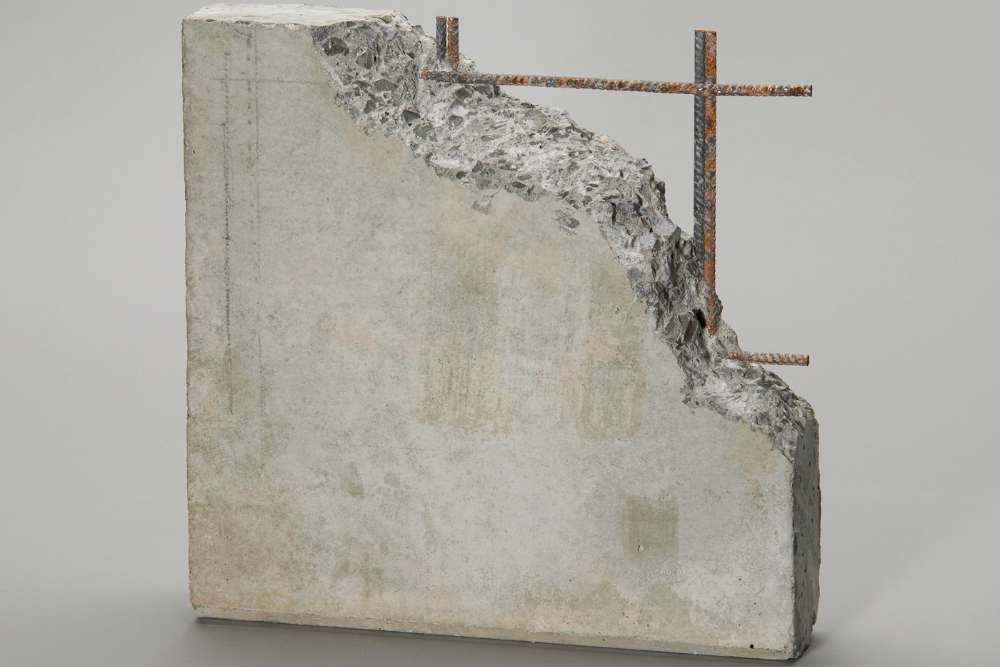Reinforced concrete is a composite material that has revolutionized the construction industry. By combining the compressive strength of concrete with the tensile strength of steel, reinforced concrete has become one of the most versatile and widely used building materials in the world. This article will explore the different types of reinforced concrete and their applications.
Characteristics of reinforced concrete
Concrete, on its own, is excellent at resisting compressive forces but is weak in tension. When steel rebar is embedded within the concrete, it can withstand the tensile forces that would otherwise cause cracks. The combination of these materials results in a composite that is both strong and durable. The compressive strength of reinforced concrete can be tailored by adjusting the concrete mixes and the amount of reinforcement.
Types of reinforcement
While steel rebar is the most common form of reinforcement, there are other options available.
- Wire mesh provides a more uniform distribution of reinforcement, making it ideal for slabs and walls.
- Fiber reinforcement, such as steel fiber and glass fiber reinforced concrete (GFRC), enhances the toughness and impact resistance of concrete. These synthetic fibers are dispersed throughout the concrete matrix, providing additional reinforcement and crack control.
- Prestressed concrete involves tensioning steel tendons within the concrete before it hardens. This creates a compressive force within the concrete, reducing the likelihood of cracking and increasing its load-carrying capacity.
Applications of reinforced concrete
Reinforced concrete is used in a wide range of applications, including:
- Beams and columns form the skeletal framework of buildings.
- Slabs provide horizontal support and distribute loads.
- Foundations transfer loads from the structure to the ground.
- Precast concrete elements such as slabs, beams, and columns are manufactured off-site and then transported to the construction site for assembly.
- Specialized applications include marine structures, tunnels, and nuclear containment vessels.
Benefits of reinforced concrete
- Versatility: Reinforced concrete can be molded into almost any shape, making it suitable for a wide range of applications.
- Strength and durability: Its combination of compressive and tensile strength ensures long-lasting structures.
- Fire resistance: Concrete provides excellent fire protection for the embedded steel reinforcement.
- Economic viability: The widespread use of reinforced concrete has made it a cost-effective construction material.
Environmental impact and sustainability
While reinforced concrete is a durable and versatile material, its production and use have environmental implications. The extraction of raw materials, such as cement and sand, can contribute to deforestation, soil erosion, and water pollution. Additionally, the energy-intensive production of cement releases significant amounts of carbon dioxide into the atmosphere.
However, efforts are being made to reduce the environmental impact of reinforced concrete through the development of sustainable materials and construction practices. Initiatives such as using recycled materials, optimizing concrete mixes, and improving energy efficiency in production facilities are helping to make reinforced concrete a more sustainable choice.
Future trends in reinforced concrete
The field of reinforced concrete is constantly evolving, with new technologies and materials emerging. Self-healing concrete, which can repair small cracks on its own, is one promising development. Nanotechnology is also being explored to enhance the properties of concrete, such as its strength, durability, and resistance to corrosion. Additionally, the integration of smart technology into reinforced concrete structures is gaining traction. Sensors embedded within the concrete can monitor its health and provide real-time data on structural performance. This information can be used to optimize maintenance and improve safety.
Challenges and considerations
Despite its numerous advantages, reinforced concrete is not without its challenges. Corrosion of the steel reinforcement is a significant concern, especially in aggressive environments. Proper design, construction, and maintenance practices are crucial to prevent corrosion and ensure the long-term durability of reinforced concrete structures.
Additionally, the weight of reinforced concrete structures can impose limitations on their design and construction. In some cases, lightweight alternatives such as steel or timber may be more suitable. Furthermore, the high initial cost of reinforced concrete can be a factor to consider in certain projects. However, the long-term benefits, such as durability and low maintenance requirements, can offset the initial investment.
Reinforced concrete has become an indispensable material in modern construction. By understanding the different types of reinforcement and their properties, engineers can select the most suitable materials for a given application. The versatility, strength, and durability of reinforced concrete make it a preferred choice for a wide range of structures.
To maximize the benefits of reinforced concrete, the following recommendations are suggested:
- Proper design: Ensure that the design of reinforced concrete structures complies with relevant building codes and standards.
- Quality control: Implement strict quality control measures during the production and placement of concrete.
- Consider alternative reinforcement: Explore the use of fiber-reinforced concrete or prestressed concrete for specific applications.
- Ongoing research: Stay updated on the latest advancements in reinforced concrete technology.


